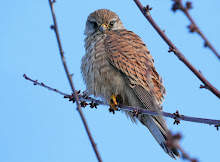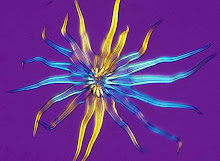A couple of weeks ago I watched these two common darter dragonflies, coupled together in tandem, laying eggs in a shallow pool near Hawthorn dene on the Durham coast. I'll be keeping an eye on it, whenever I pass by, to see how well the nymphs are developing.
It may be a race against time for them, because these shallow pools on the limestone dry up completely in early summer in years when there is a drought. They dried up for several weeks this year, and last.
I imagine that their success will depend on how the rest of the aquatic fauna, their food source, develops over the next few months. If frogs or toads lay eggs in the pools in spring, as they sometimes do, then the nymphs will have plenty of tadpole food and might complete their development and hatch as adults in less than a year, which they are capable of, if conditions are good.
While I was watching these two I noticed that they were attacked, unsuccessfully, several times by a much larger southern hawker - the first time I've ever noticed a display of aggression between dragonfly species.












































